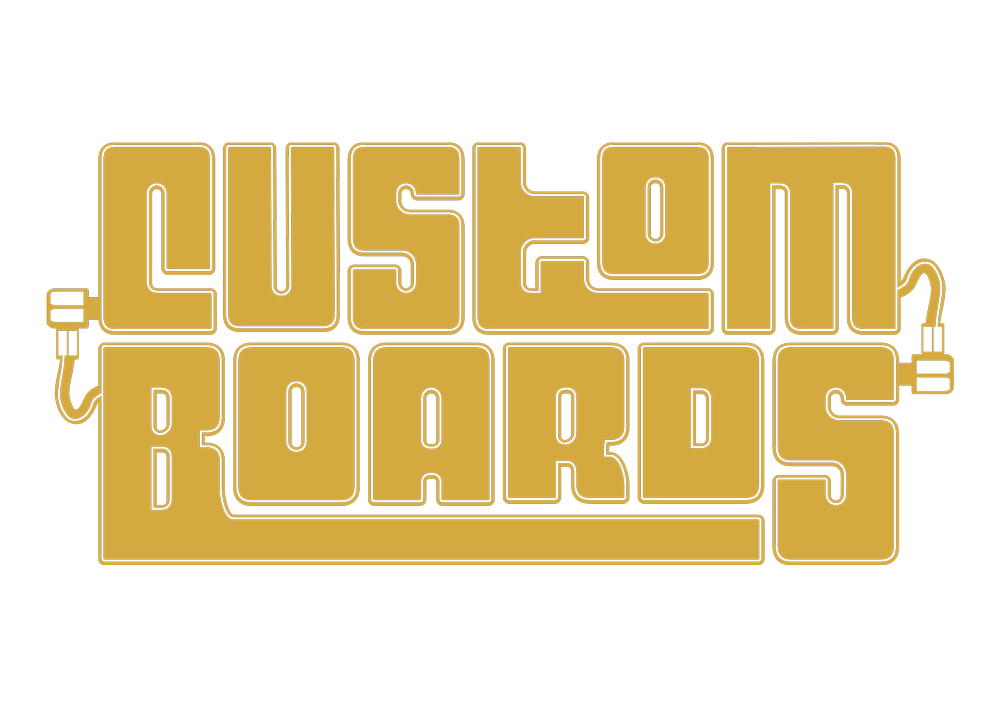Stress relief – securing the guitar cable to the pedalboard
A guitar cable is prone to all kinds of strain during a live show. Because of this, it is very important to take connecting the guitar lead to the board into account already during the planning stage. The lead shouldn’t stick out further than the frame’s outer perimeter.

At Custom Boards we use the same Custom Boards Safety Carabiner Set that we used when we attached the cable loom to the pedalboard.

Using our set will make sure your guitar cable stays safely in place under any circumstances. You don’t want the cable to be jerked out of your pedalboard, cutting your signal completely.
- Assess the direction and angle the strongest pull on your guitar cable will come from.
- Place the strain relief close to the first pedal’s input, in the direction of the pull.
- Thread the carabiner into a pair of 26 mm clips with the shackle’s open side facing up.

Once you’ve found the best possible spot glue the clips onto the frame in such a way, that the clips’ openings face into the board, while the carabiner’s wider side is turned towards the musician.
- Feed the metal ring onto the carabiner.
- Plug your instrument cable into the first effect’s input jack.
Make sure your cable leaves the pedalboard in a natural curve, taking the lead away from the board, without any possibility of it ending up beneath a wah-wah or a volume pedal, or the footswitch of a Boss effect.
Find a suitable spot for the metal ring by slowly moving along the lead’s length. Keep the key ring between your fingers while sliding it along the surface of the cable. You want to make sure that the bit of cable between the ring and the first effect’s input stays completely unaffected when yanking the cable, and that all the stress is taken up by the metal ring and the carabiner.
– Once you’ve found the perfect spot, use a cable tie to attached the ring to the guitar lead. Then cut off the end of the cable tie, making sure not to leave any sharp edges.
– Should you find that you’ve attached the ring in the wrong place after all, you can simply dispose of the first cable tie, and then repeat the process with the second cable tie we’ve included with our Custom Boards Safety Carabiner set.
– Move the guitar lead around in different directions, and give it a few tugs to make sure you’ve placed the strain relief correctly.

You can prevent your guitar cable from being accidentally pulled out of your instrument by feeding it between your guitar and the strap, or by using a 26 mm Safety Clip on your instrument. The clip works especially well on acoustic instruments that often sport combined output jacks and strap pins.

If you want to tie up your cable during the transport, you can use one of our Cable Straps to prevent your cable not the get tangled.
*****
If you have purchased all the parts and components but get a feeling that you might not be up to the task after all, we can make your pedalboard for you, using the components you have bought from us. Don’t worry, we won’t let anything go to waste.




